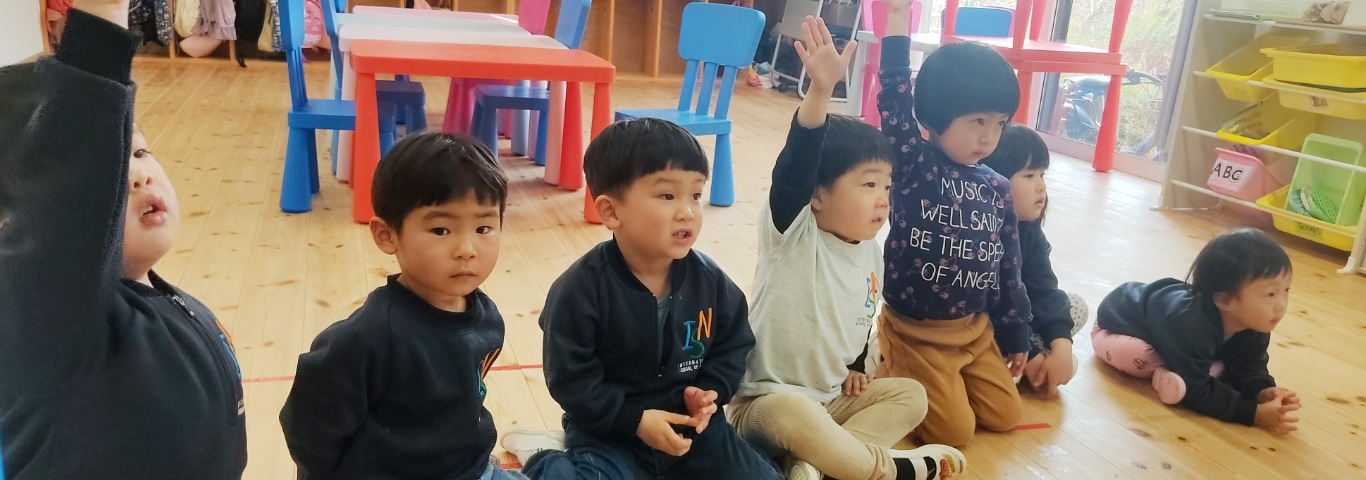“The plants don’t eat! – Yes, they do! – eh, how?” were some of the lines from the dialogue between students while inquiring about the structure of plants. 🪴 To see how this works, we did another experiment, where we soak a plant in the water with color and observe weather the plant will absorb the water or not. The next day, the kids came to the classroom and were so amazed to see the leaves changed their color, according to the color of the water they are soaked in. The whole class made a conclusion that: Indeed, a plant eats, after all it’s a living thing which needs water, sun to grow!
”植物は何も食べないよね?- 食べるよ!じゃぁ、どうやって?” …植物の構造について質問をしている時に出た、子ども達同士の会話です🪴 この仕組みを見るために、色をつけた水に植物を浸し、植物が水を吸収するかどうかを観察をしました。次の日、子ども達が登園しその植物を見てびっくり!!浸した水の色と同じ色に葉の色が変わっていたのです。子ども達は全員がこう結論づけました「 植物は、水と太陽を必要とする生き物だ!」



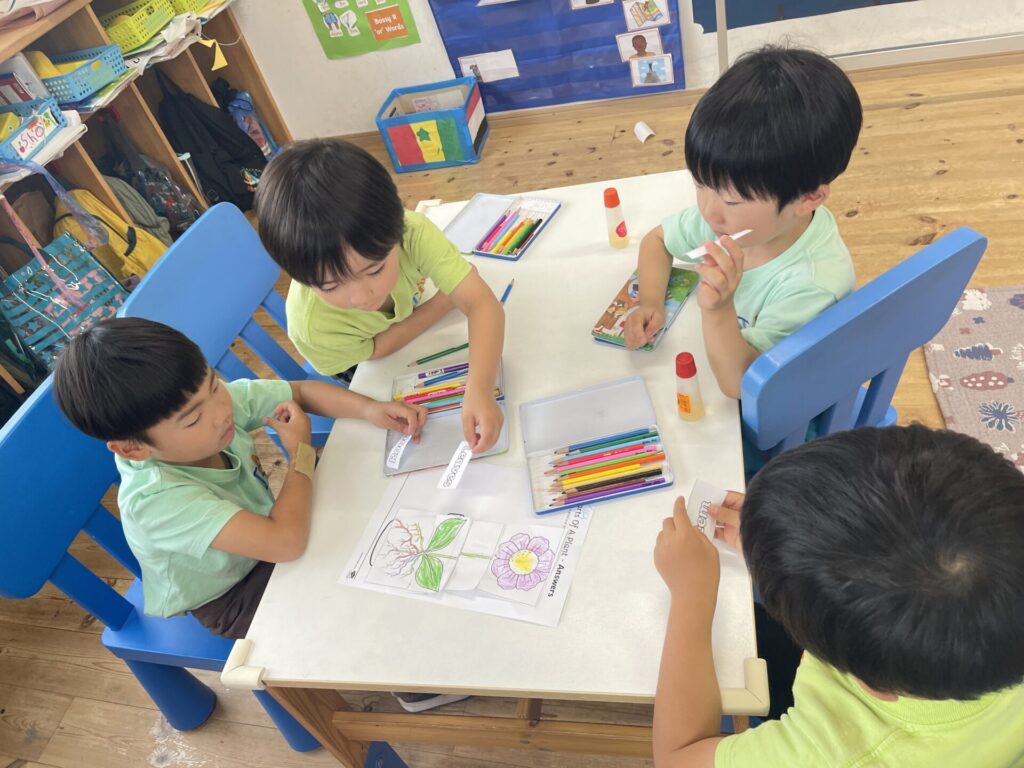
予備知識: 植物の部位を特定し、ラベルを付けておきます。
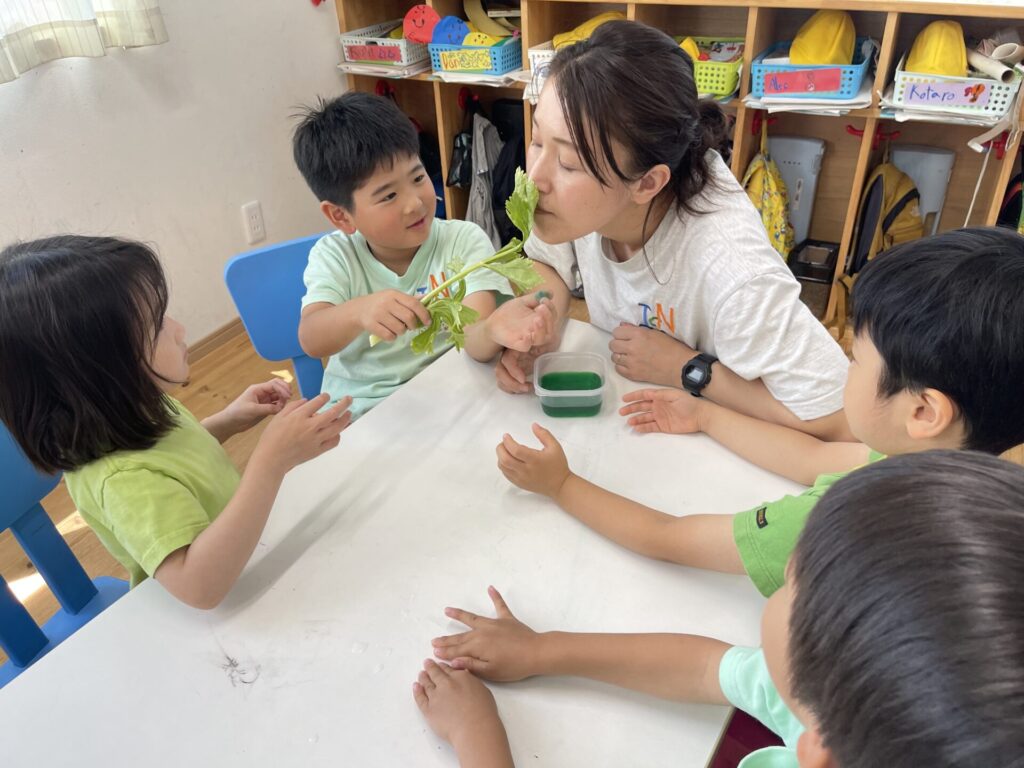

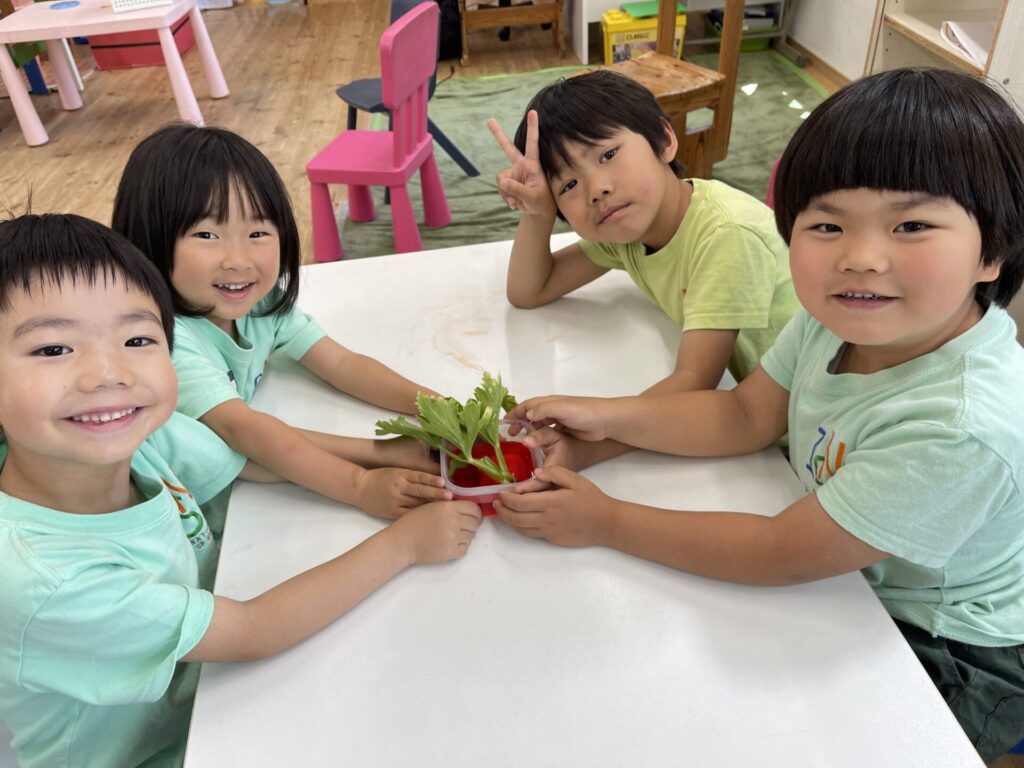
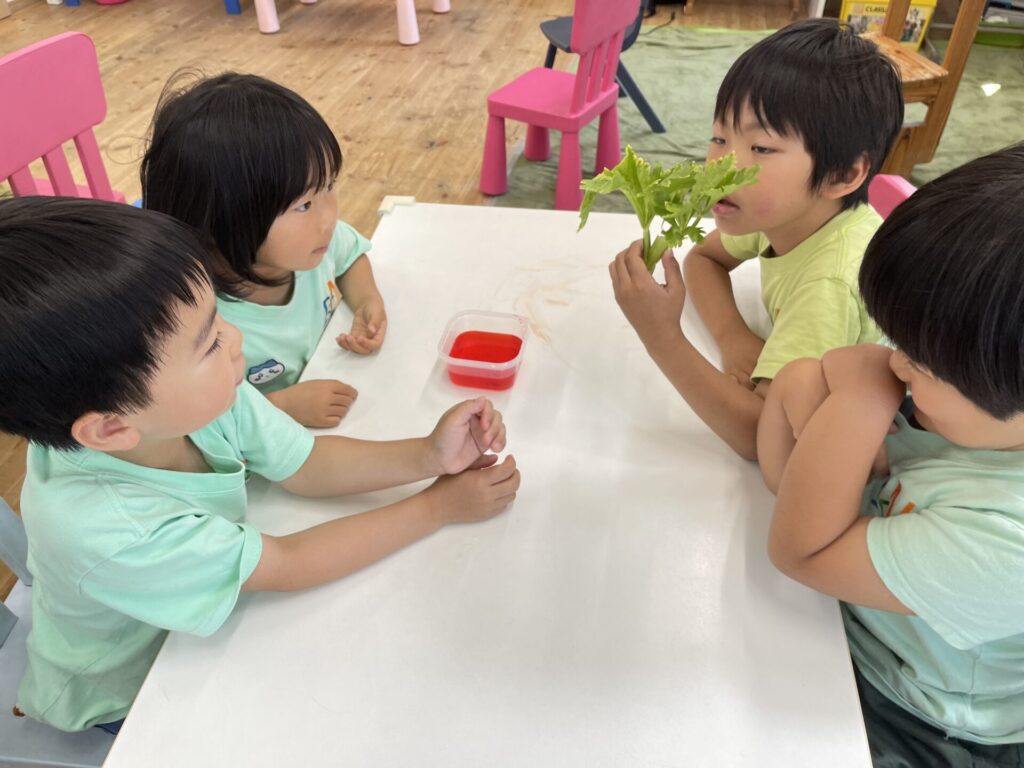
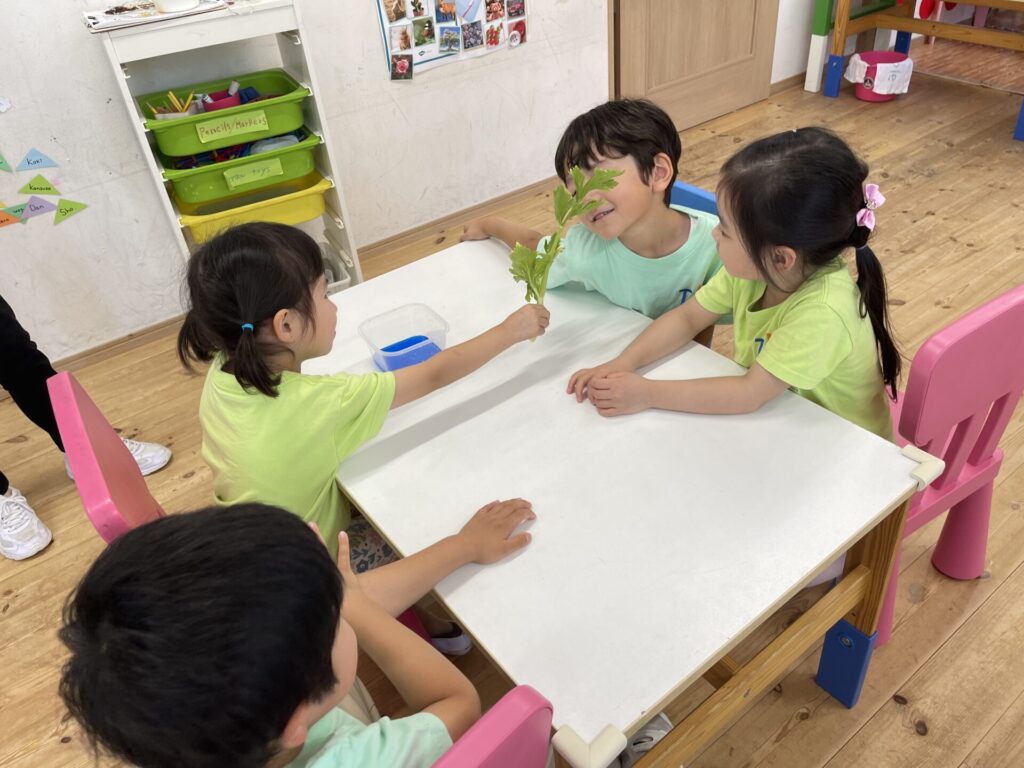

After inquiring about the structure of a plant, the rainforest students got themselves immersed with the books they picked from the library and look for more information about plants. The team looked closely on every information they see from the books. Some of the findings were: Pumpkins have different colors depends on their type, a set have different numbers of fruits, beans have seeds inside and more. The inquiry makes them super excited to learn more about plants and even asking more question as we go like: when a plant is soaked in the water it absorbs the water, but how about when they are in the soil? How do they absorb the water? and more debates too: “I think the most important part of the stem are the leaves, because it keeps the balance of the plant, and one said: I think it’s the flower because the water gets from it and spread to the whole plant, but that is the work of the roots not the flower, one said.” Then finally after watching a story about plant, they came to a conclusion that, all the parts of the plants are important. Each of the part help the plant to stay healthy.
植物の構造について質問した後、図書室で本を選び、植物についてさらに詳しい情報を探しました。本から得たあらゆる情報をじっくりと観察した結果、次のような事がわかりました。: カボチャは種類によって色が違う事、果物は種類によって実の数が違う事、さやえんどうなどの中身の豆は種だという事など。さらなる探究の為、子ども達に質問をしてみました。”実験から植物が水に浸かると水を吸収する事がわかったけど、土の中にいる時はどうだろう?どうやって水を吸収するんだろう?”さらに子ども同士の話し合いも…「植物の中で最も重要なのは葉だと思う。なぜなら、葉は植物のバランスを保っているから。」「私は花だと思う。なぜなら花から水分が植物全体に行き渡るから。」「でも、それは花ではなく根の仕事だ。」…。最後に、植物についてのビデオを見た後、彼らは植物のすべての部分が重要であるという事がわかりました。それぞれの部分が、植物の健康維持に役立っているのです。
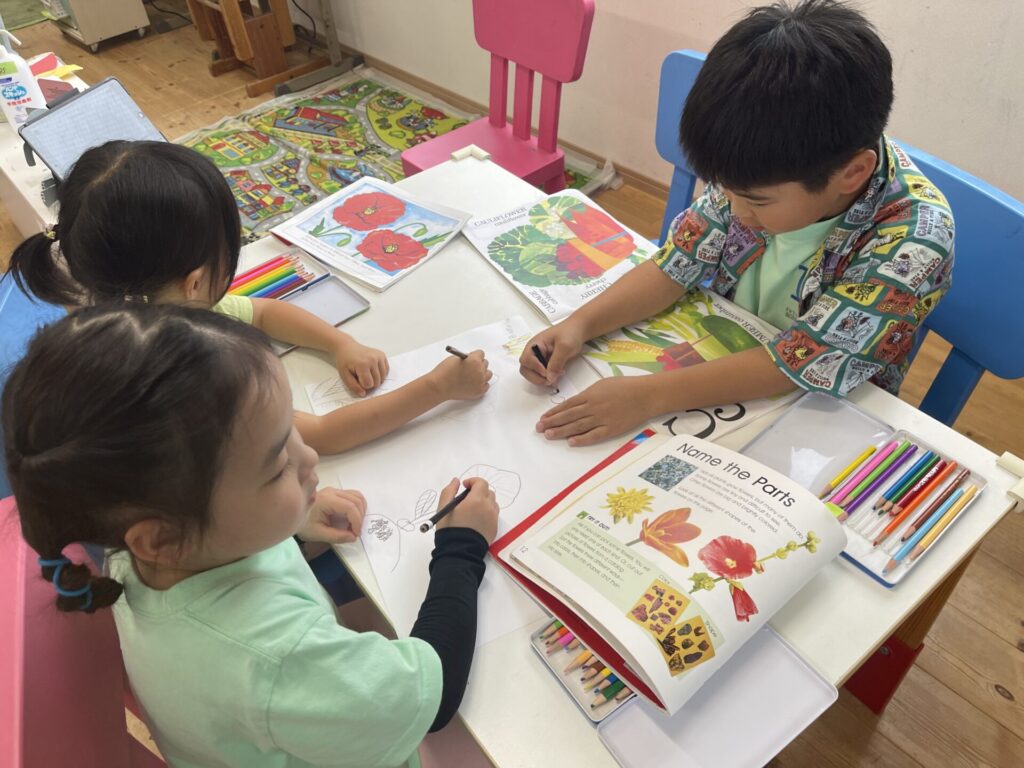




Our reading and writing activities were merged this week. Since our Rainforest students love challenges, the teacher wrote the words on the board and challenged them to write the words the teacher is reading: they can write the correct word, only if they can read. And this is what happened, they were so engaged and reached 20 points reading, enjoying practicing reading and writing as they have fun.
今週はリーディングとライティングのアクティビティを同時に行いました。新しい事にチャレンジする事が大好きな子ども達。先生がホワイトボードに単語を書き、一つずつ読み、子ども達がチームで協力してその単語を書きました。夢中になって20個の単語を読み、楽しみながら書く練習ができました。

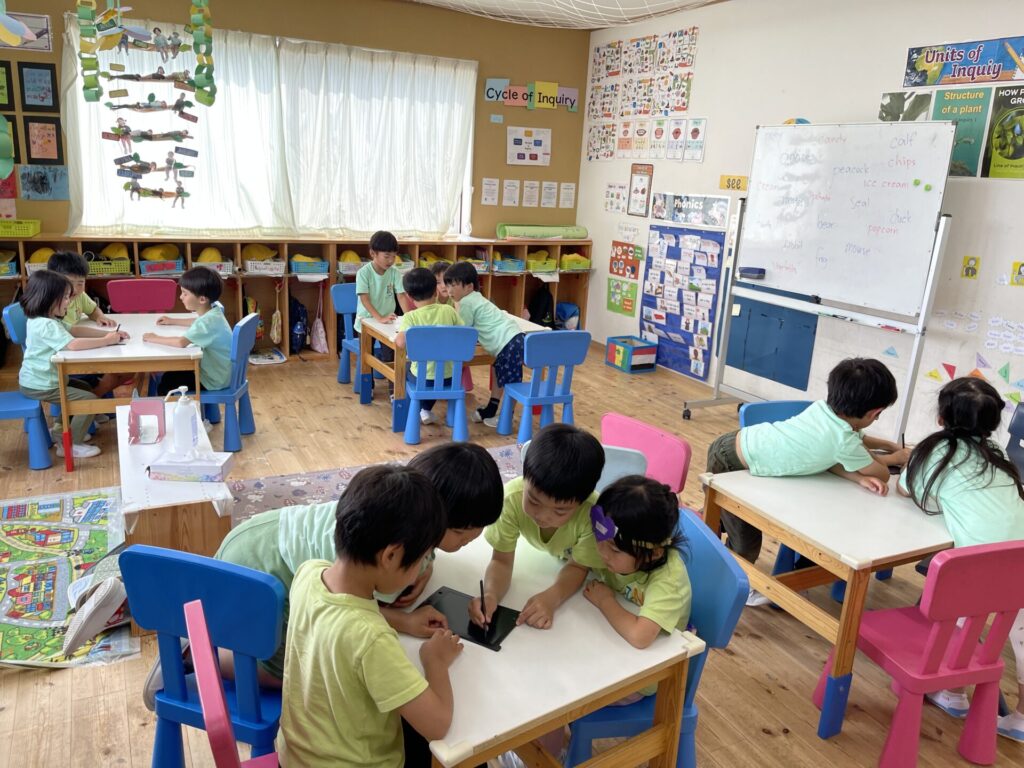
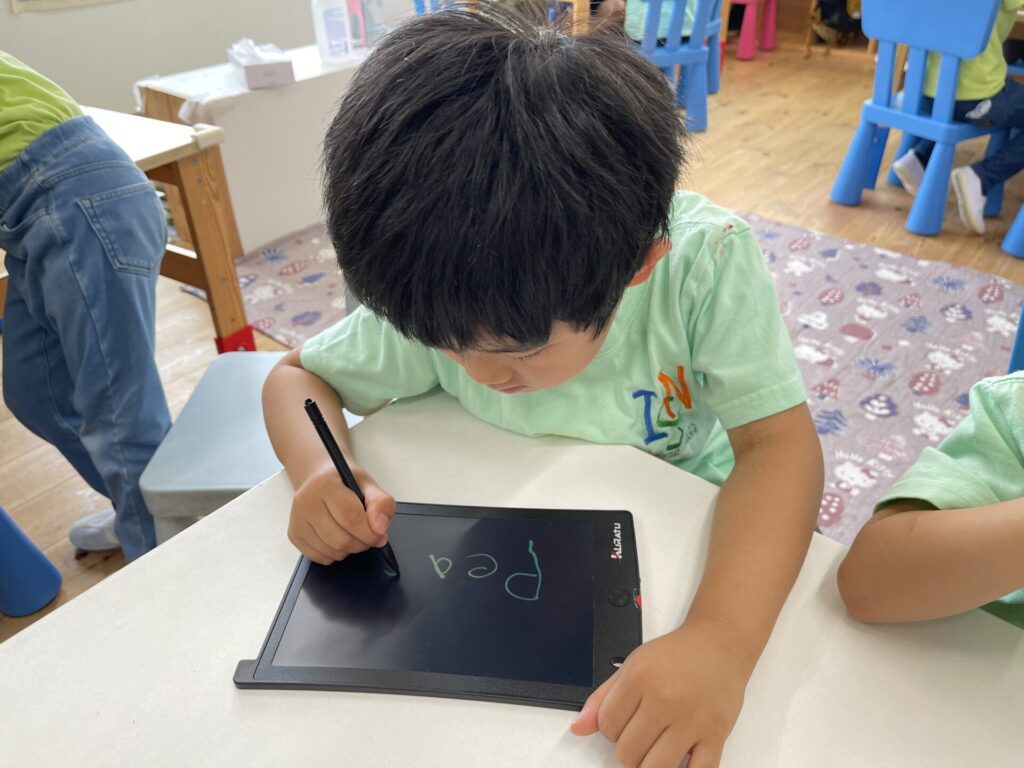
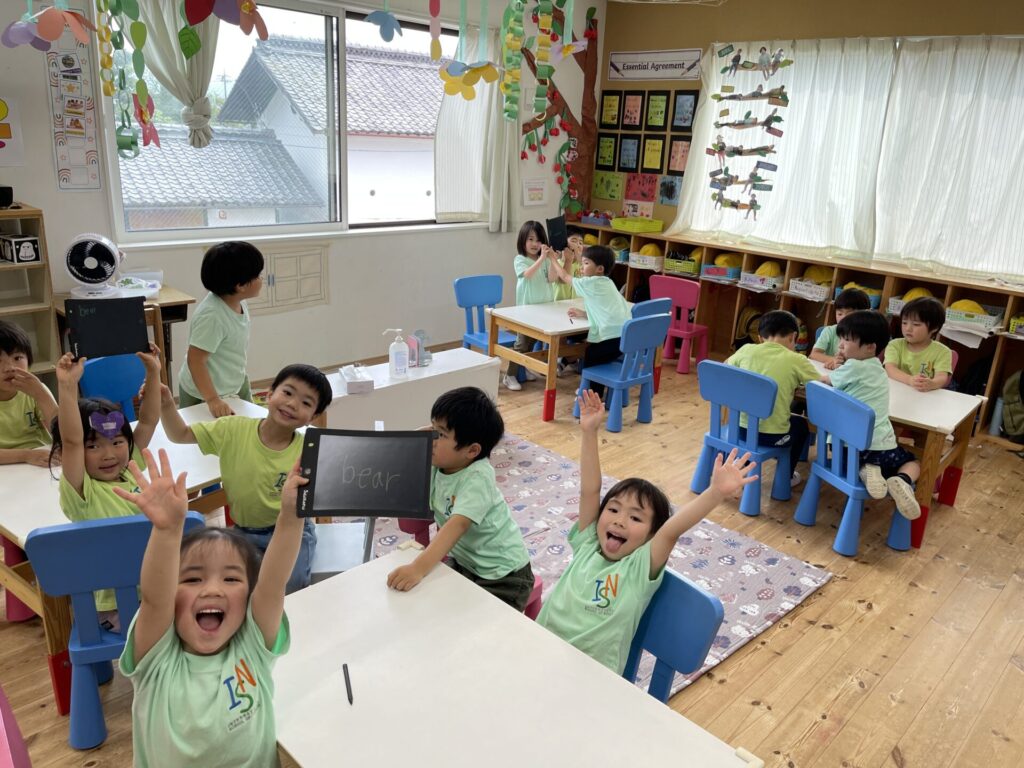
It has been a muddy week!
The rainforest students have started enjoying their time in the mud in their outdoor free play time. The muddy play looks dirty but actually have lots of benefits to the kids. Thanks to our dad for creating the fence for our muddy puddle area.
泥遊びを楽しんだ一週間!
自由遊びの時間に園庭で泥遊びを楽しんでいます。泥遊びは、子ども達にとってたくさんのメリットがたくさん!泥んこエリアの柵を作ってくれた保護者の方に感謝です。
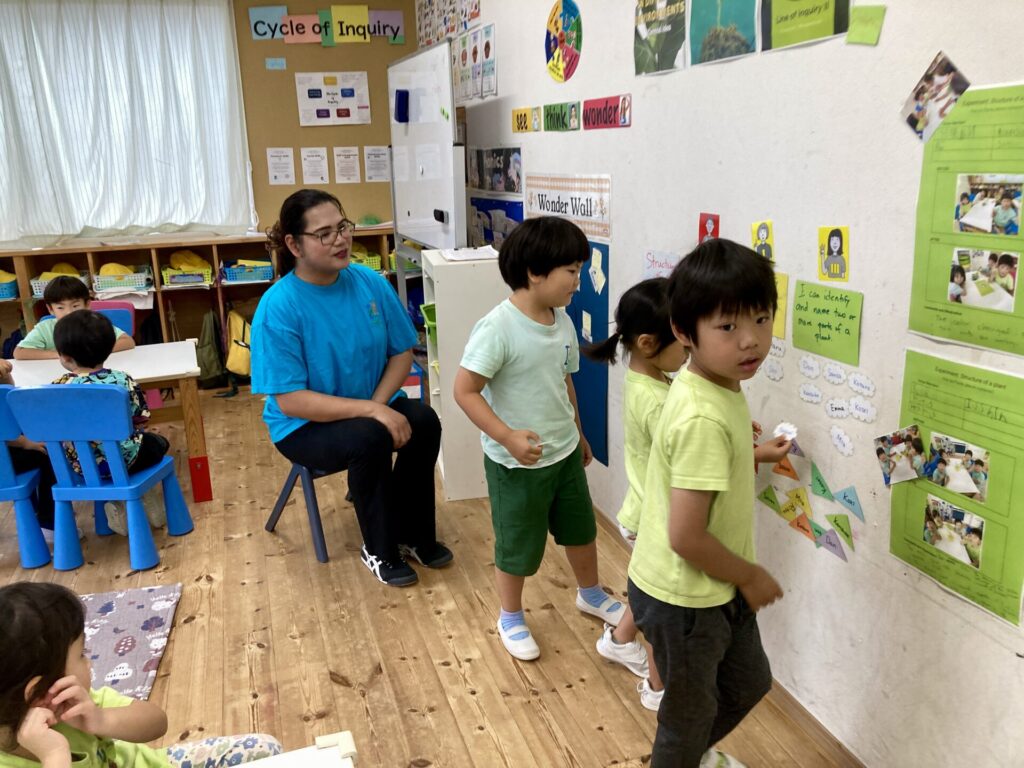

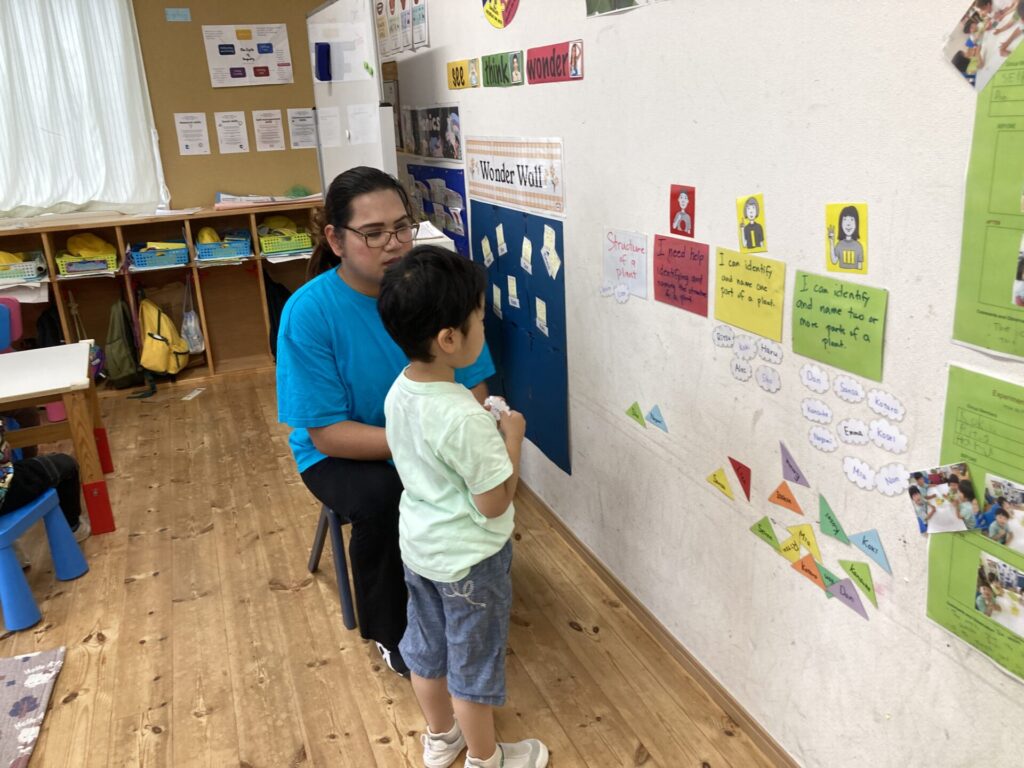
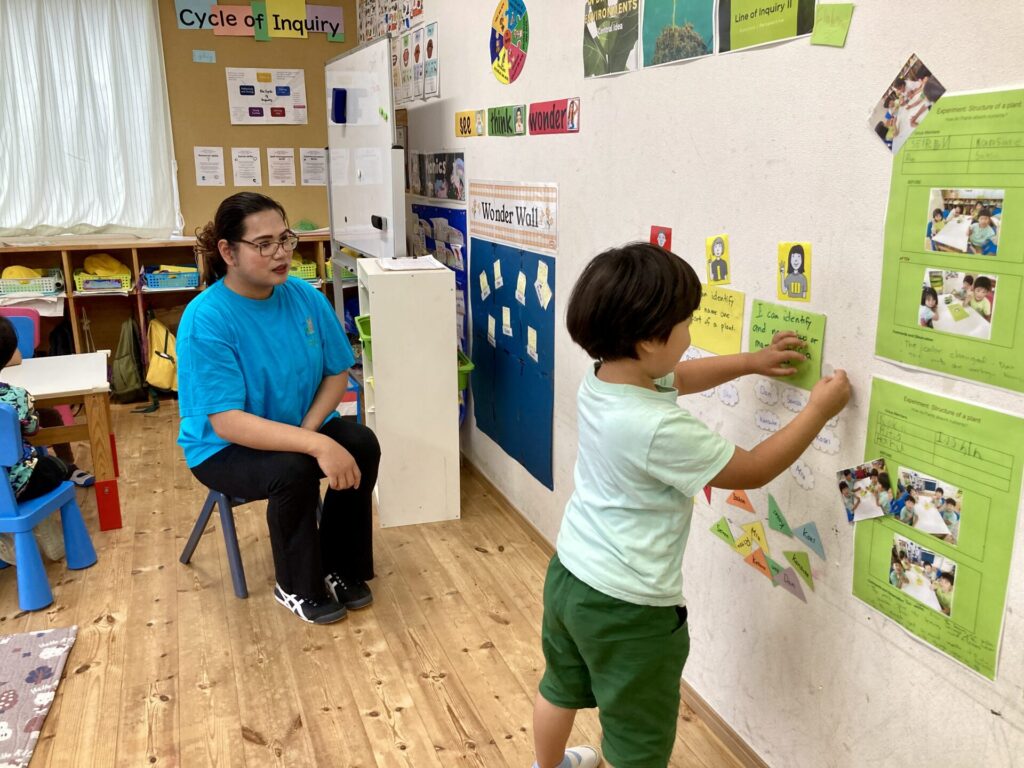
Please catch us on the next blog as we move on the next stage of our inquiry.
次回のブログでは、次のステージに進むための探究を紹介します。

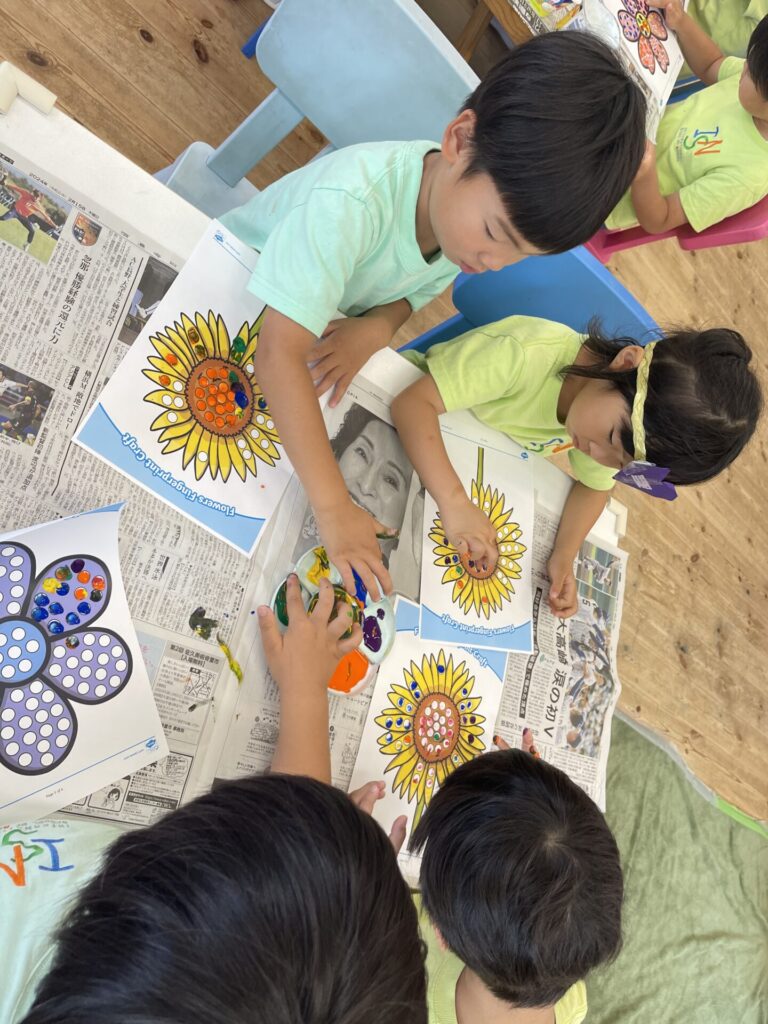
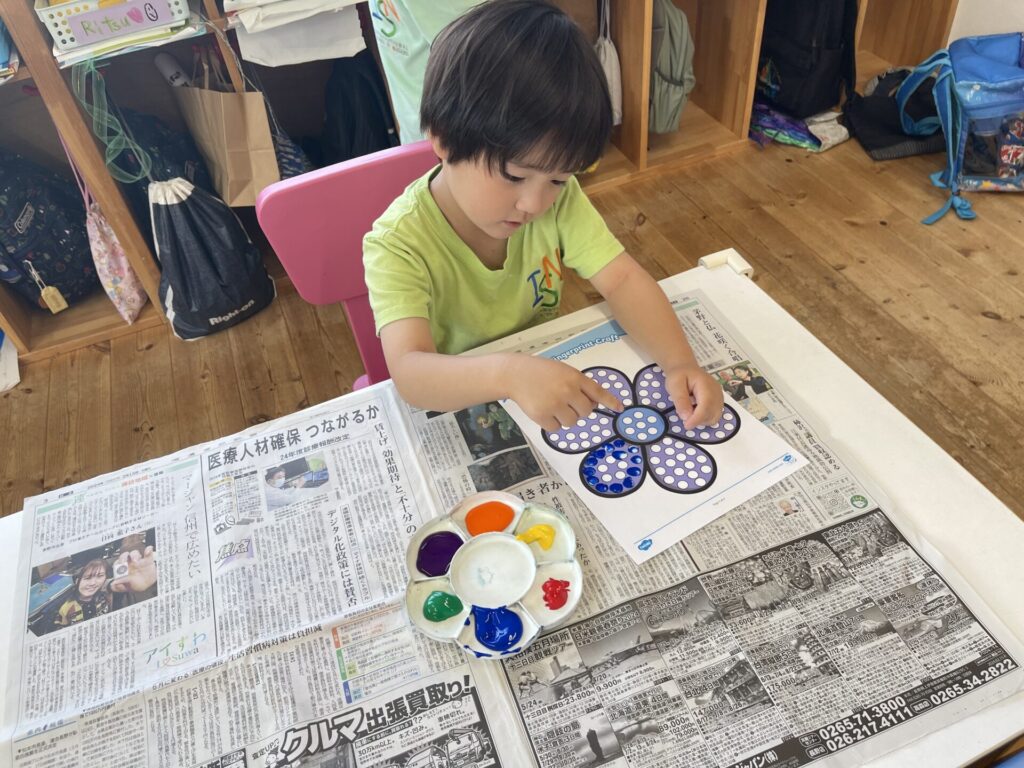

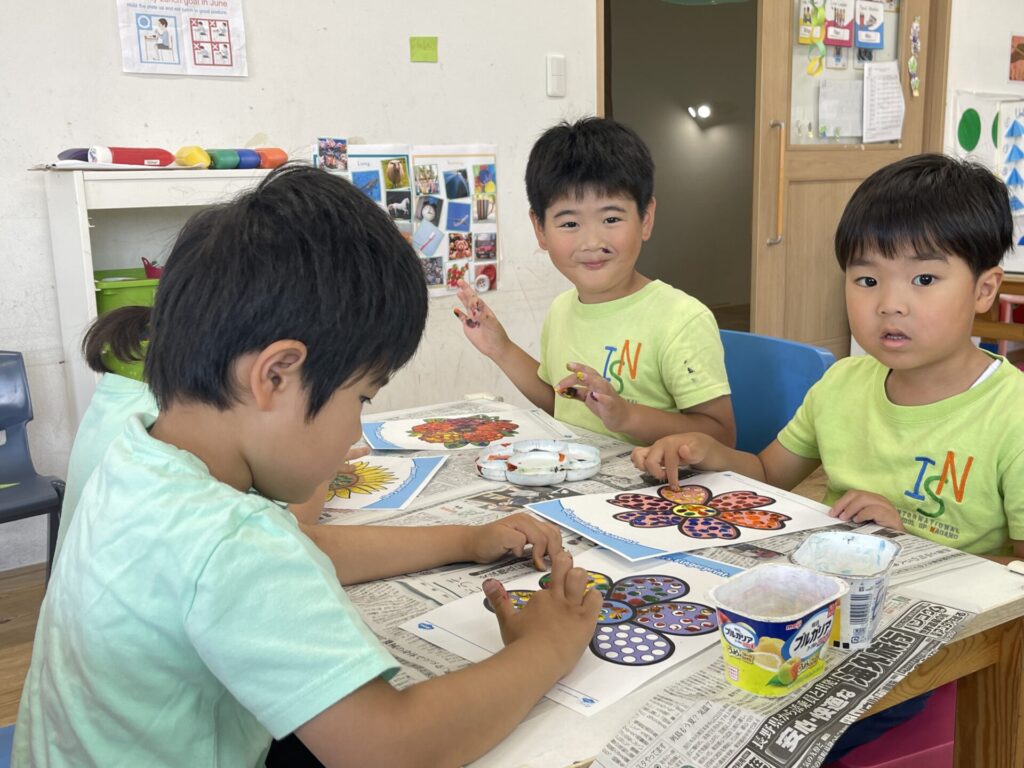

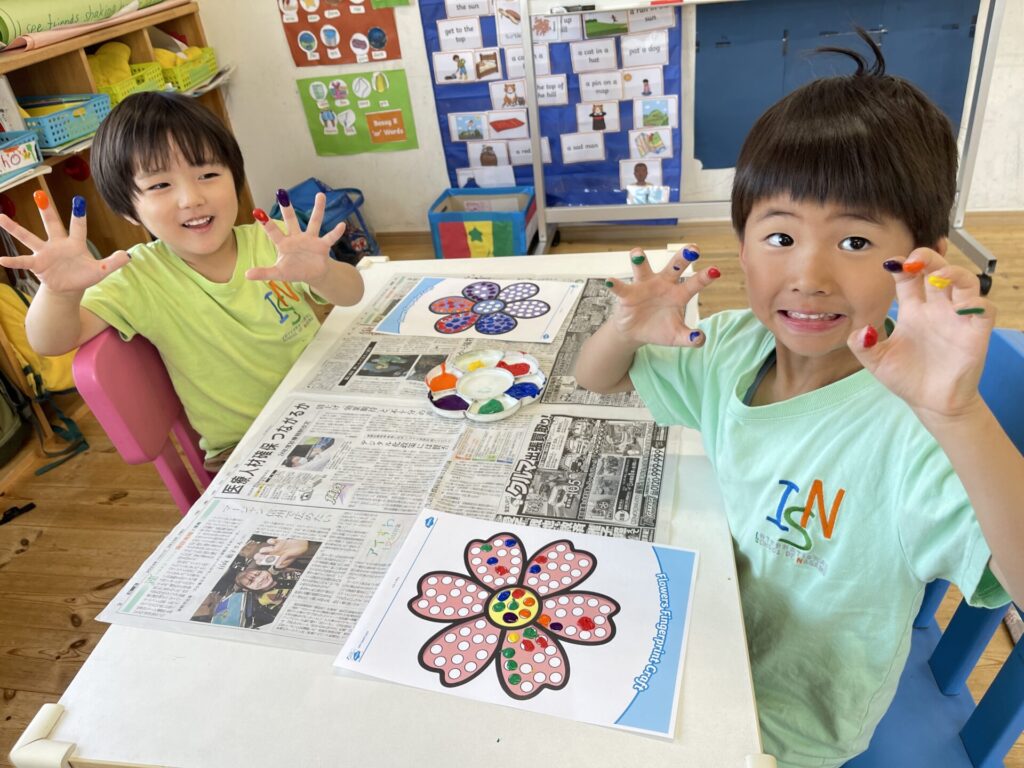

This is the song we sing during the class.
レッスンで歌っている曲です。ぜひ子ども達と歌ってみてください。
Have a nice weekend!
素敵な週末をお過ごしください。
